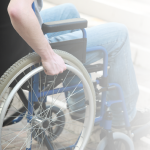Abatacept
Fleischmann et al reported results of the AMPLE (Abatacept Versus Adalimumab Comparison in Biologic-Naive RA Subjects With Background Methotrexate) study at the European League Against Rheumatism (EULAR) 2012 Annual European Congress of Rheumatology, held in Berlin June 6–9.1 This was a phase IIIb randomized, investigator-blinded study that lasted 24 months, with a 12-month efficacy primary endpoint. Patients were enrolled if they were biologic-naive and had active rheumatoid arthritis (RA) and an inadequate response to methotrexate (MTX). They were randomized to receive either 125 mg subcutaneous (SC) abatacept (without an intravenous [IV] load) weekly or 40 mg SC adalimumab (ADA) biweekly, in combination with a stable dose of MTX. Patients were also stratified by disease activity. The primary endpoint was noninferiority by ACR20 response at 12 months with a noninferiority margin of 12%. At one year (intention-to-treat analysis), the ACR20 response was 65% for abatacept-treated patients and 63% for ADA-treated patients, showing that both agents were comparable in efficacy via noninferiority analysis. Additionally, they had similar response kinetics and radiographic progression inhibition at year one. Safety was similar between the agents. However, there were fewer drug discontinuations (3.5% versus 6.1%) and significantly fewer injection site reactions (3.8% versus 9.1%) with abatacept compared to ADA.
Adalimumab
In this study, treatment with ADA for up to 10 years imparted disease relief and improved quality of life in patients (n=846) with documented moderate-to-severe RA, despite disease-modifying antirheumatic drug (DMARD) therapy.2 This study, DE020, was a long-term, follow-up trial that enrolled patients from four prior studies of ADA, including the ARMADA and STAR studies, from the early ADA development program. At the investigators’ discretion, patients could receive supplemental DMARD therapy. Joint pain, swelling, and stiffness and physical function, as well as achieving clinical remission, were all assessed. Patients continued to maintain disease activity improvements. A DAS28 of less than 2.6 (remission) was maintained in 57% of patients continued on ADA, and low disease activity less than or equal to 3.2 was seen in 71% of patients. Other response rates were an ACR 20 of 79%, an ACR50 of 56%, an ACR70 of 33%, and HAQ-DI of less than 0.5 in 42% of patients. In addition, no new safety warning signs were identified, nor was there a mortality rate increase. Rates of serious adverse drug events were 18.2 per 100 patient-years, and low for serious infections, tuberculosis, malignancies, and lymphoma.
Etanercept
de Vlam and Lories reported joint space narrowing and decreased erosions in DMARD-resistant polyarticular psoriatic arthritis (PsA) patients (n=20) who were previously part of an open, 26-week, observational etanercept study.3 Hand and foot X-rays were examined at baseline and Year 1 and Year 6. Both new bone formation and erosions were assessed. Etanercept treatment arrested radiographic signs without further deterioration of joint destruction in patients with severe PsA, with true repair of destructed joints in the feet, including metatarsophalangeal joints. Other joints showing joint repair included the proximal interphalangeal joints and distal interphalangeal joints of dominant hands. These changes occurred in a sustainable manner.
Golimumab
The efficacy of IV golimumab (GLM) at 2 mg/kg (dosed Weeks 0, 4, and Q8), was evaluated in RA patients (n=592) with active disease despite three or more months of MTX therapy (15–25 mg/week) in a multicenter, randomized, double-blind, placebo-controlled phase III study.4 The primary study endpoint was ACR20 at Week 14. Significantly more GLM-treated patients (P<0.001) met the primary endpoint (59% versus 25%). At Week 2, significantly more GLM-treated patients had DAS28-CRP with a good/moderate response (81% versus 40%), ACR50, and a greater median improvement in their HAQ score (0.500 versus 0.125). Post-hoc analysis at Week 14 showed significant improvements in Clinical Disease Activity Index and the Simplified Disease Activity Index measurements (P<0.001). Adverse drug events (ADEs) were similar between active and placebo-treated patients (at around 50% at Weeks 16 and 24). Serious ADEs were mostly infections and were reported by more GLM-treated patients (4% versus 1%). Tuberculosis infections or serious opportunistic infections were not reported. There were no serious infusion reactions. This study showed significant improvement in RA signs and symptoms in patients with active disease as early as two weeks after dosing.
Ustekinumab
In this study, McInnes et al evaluated ustekinumab in a 24-week, placebo-controlled, phase III trial assessing its safety and efficacy in reducing signs and symptoms of active PsA.5 Patients (n=615) received either ustekinumab 45 mg or 90 mg SC at Weeks 0, 4, and 12, or placebo. If there was less than a 5% improvement in swollen joint counts or tender joint counts at Week 16, patients were entered into a blinded early escape. The escape was that placebo-treated patients were given ustekinumab 45 mg, ustekinumab 45 mg-treated patients were given 90 mg; and ustekinumab 90 mg-treated patients remained on that dose. Stable concomitant MTX was allowed. Both doses of ustekinumab-treated patients showed significantly greater ACR20, ACR50, ACR70, and DAS28-CRP responses compared with placebo-treated patients at Week 24 (P<0.001). Changes from baseline in HAQ-DI at Week 24 were significantly greater with ustekinumab-treated patients (–0.3 versus no change, P <0.001). Benefits derived from ustekinumab were not due to concomitant MTX use. At Week 24, a significantly larger proportion of patients achieved a Psoriasis Area and Severity Index 75 score, among those individuals (n=440) that had greater than or equal to 3% of their body surface area affected at baseline (57.2%, 62.4%, and 11% for 45 mg, 90 mg, and placebo, respectively; P<0.001). Patients treated with ustekinumab also had improved physical function, enthesitis and dactylitis, and improved plaque psoriasis compared with placebo-treated patients, with safety profiles being similar between active treatment and placebo groups.



